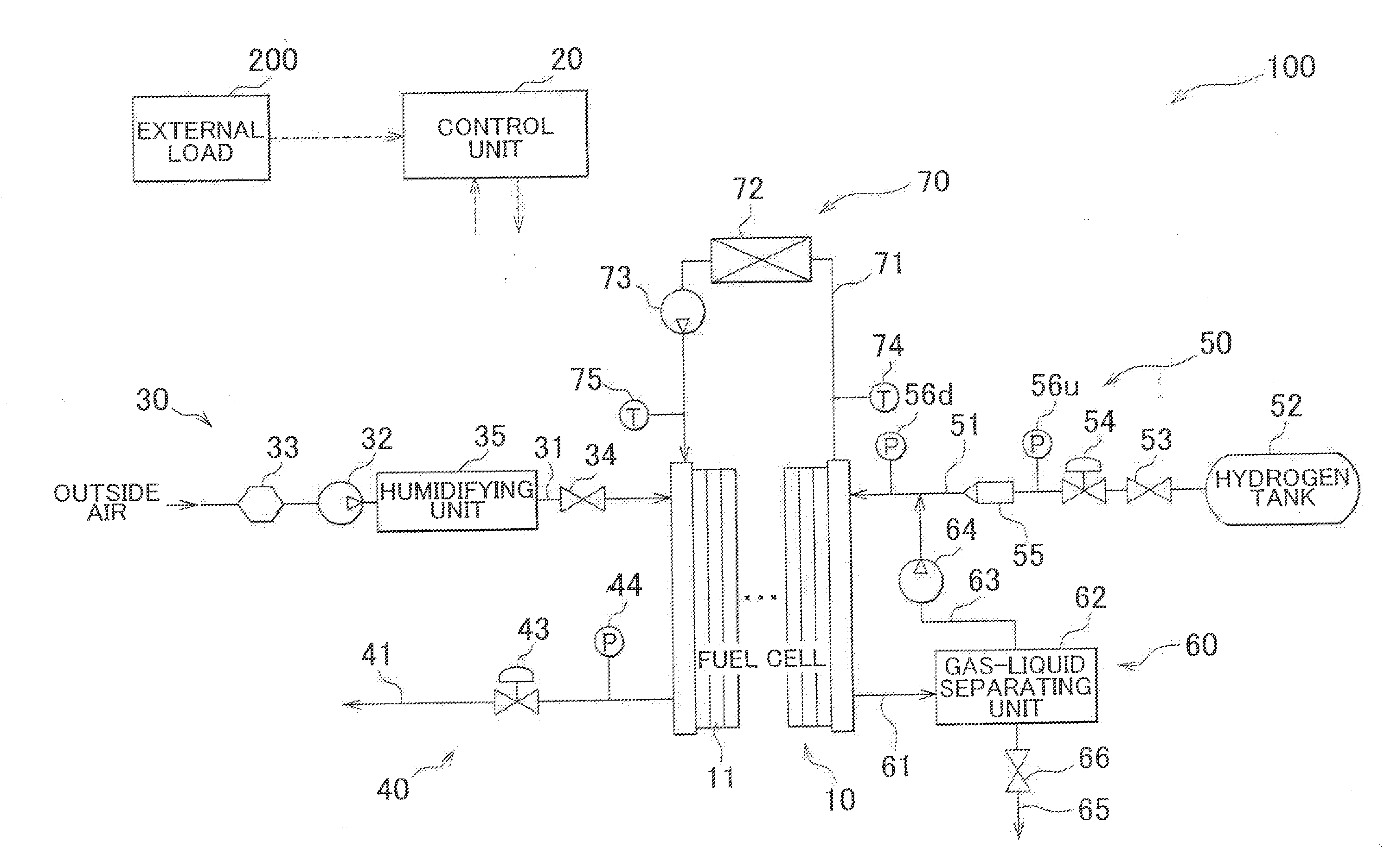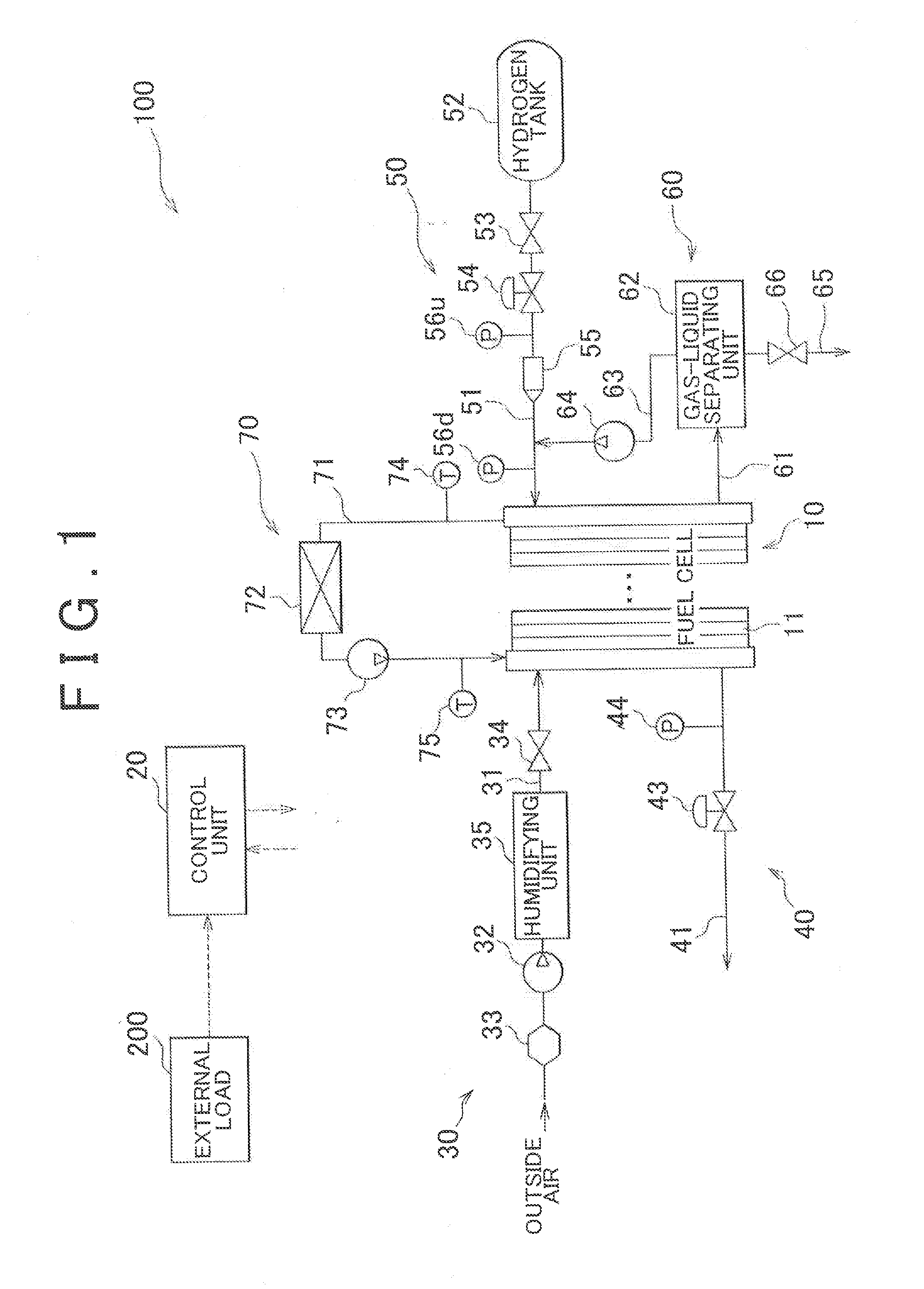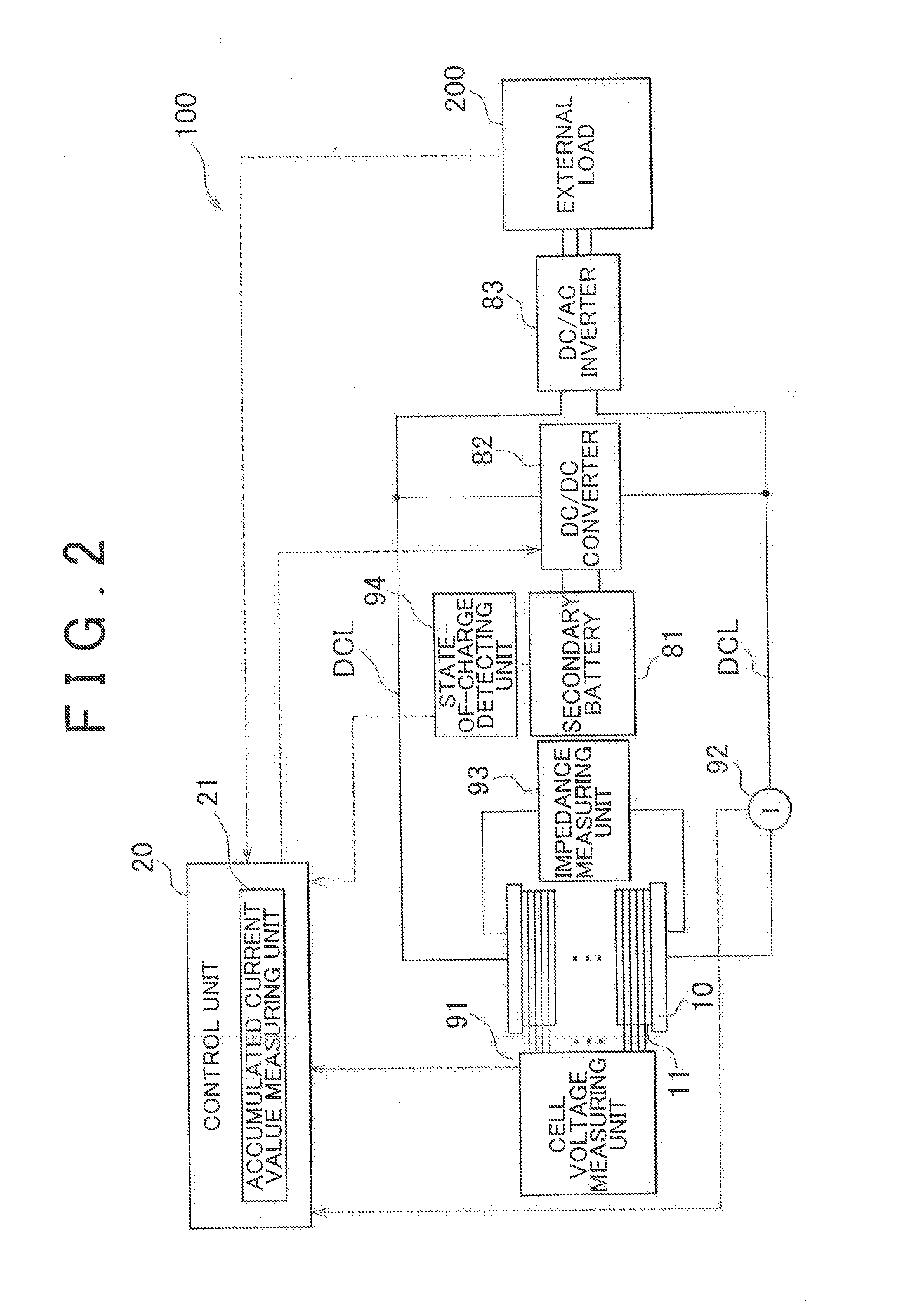Fuel cell system and control method therefor
a fuel cell and control method technology, applied in the field of fuel cells, can solve the problems of single cell part generating negative voltage, single cell part supplying reaction gases, fuel cell overall deteriorating power generation performance, etc., and achieve the effect of suppressing performance deterioration
- Summary
- Abstract
- Description
- Claims
- Application Information
AI Technical Summary
Benefits of technology
Problems solved by technology
Method used
Image
Examples
first alternative embodiment
[0157]In the above described embodiments, the control unit 20 stores the oxygen consumption rate map MGV as the correlation between an accumulated current value and an oxygen consumption rate in the storage unit, and stores the current density threshold map MTC as the correlation between a current density and an oxygen production rate in the storage unit. However, these correlations do not need to be stored as maps; instead, for example, these correlations may be stored as arithmetic expressions or functions. Note that the same applies to the various maps described in the above described embodiments.
second alternative embodiment
[0158]In the above described embodiments, the cell voltage measuring unit 91 measures the voltages of ah the power generating elements 11 of the fuel cell 10 to thereby detect negative voltage. However, the cell voltage measuring unit 91 does not need to measure the voltages of all the power generating elements 11; the cell voltage measuring unit 91 just needs to measure the voltage of at least one of the power generating elements 11 to thereby detect negative voltage. For example, it is known that it is highly likely that negative voltage occurs In the power generating element 11 arranged at the end portion of the fuel cell 10, at which the operating temperature tends to be the lowest, among the power generating elements 11. Then, the cell voltage measuring unit 91 may measure, the voltage of only the power generating element 11 arranged at the end portion to detect negative voltage.
third alternative embodiment
[0159]In the first embodiment, the control unit 20 uses the oxygen consumption rate map MGV and the current density threshold map MTC to determine the current density threshold imax so as to reduce oxygen present in the anode of the negative voltage cell 11. Instead, the control unit 20 may use a single map that indicates the correlation between an accumulated current value and a current density, which is a combination of the oxygen consumption rate map MGV and the current density threshold map MTC, to acquire a current density threshold against an accumulated current value in a period during winch negative voltage is generated.
[0160]In addition, the control unit 20 may prestore, in the storage unit, the correlation between an accumulated current value in a period during which negative voltage is generated and a current density at or below which the negative voltage cell 11 may recover from negative voltage by increasing the amount of supplied hydrogen, instead of the oxygen consump...
PUM
 Login to View More
Login to View More Abstract
Description
Claims
Application Information
 Login to View More
Login to View More - R&D
- Intellectual Property
- Life Sciences
- Materials
- Tech Scout
- Unparalleled Data Quality
- Higher Quality Content
- 60% Fewer Hallucinations
Browse by: Latest US Patents, China's latest patents, Technical Efficacy Thesaurus, Application Domain, Technology Topic, Popular Technical Reports.
© 2025 PatSnap. All rights reserved.Legal|Privacy policy|Modern Slavery Act Transparency Statement|Sitemap|About US| Contact US: help@patsnap.com



